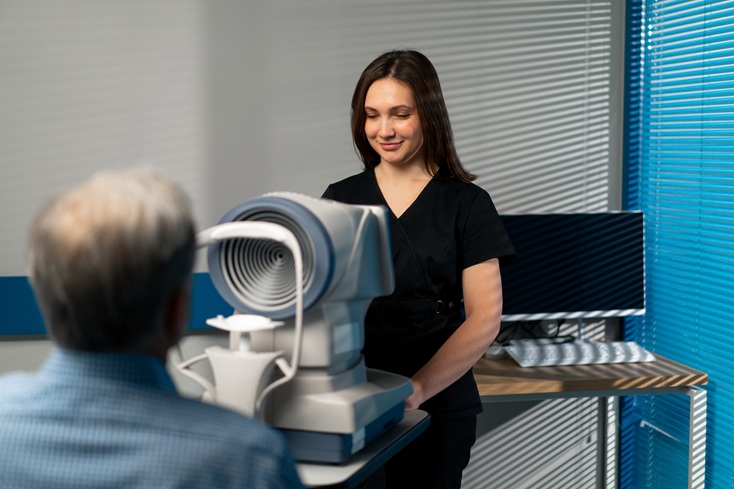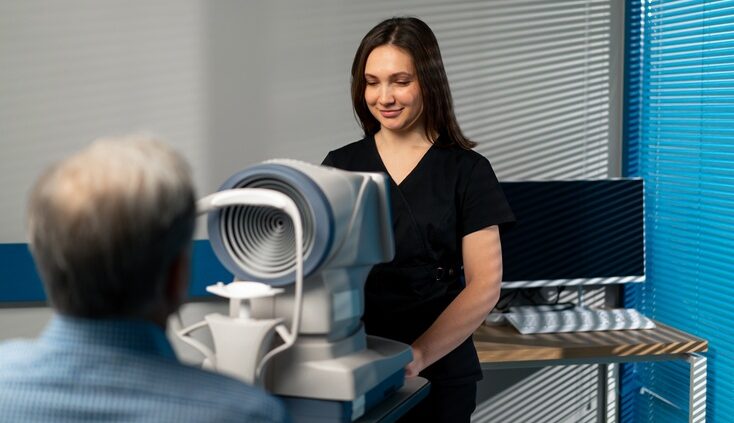How Technology Has Transformed Vision Screening and Treatment

A clear vision is critical to the quality of life, wellbeing and overall health of any individual. Our eyes are the windows through which we view the world and navigate life in general. Sadly, multitudes all over the world are faced with different kinds of challenges as it regards their vision. These challenges or issues range from minor ametropia (refractive errors) to major diseases such as macular degeneration and glaucoma.
Thankfully, medical science keeps evolving by the day so much so that eye care is now so advanced that these conditions can either be detected early or treated/reversed. Technology has played a significant role in this as there are now innovative AI-driven solutions and surgeries that are used to diagnose, monitor and treat all kinds of eye problems.
In this article, we will explore some of the technological advancements that has been made and how they have greatly enhanced result for patients.
Meanwhile you can visit this site: https://health.howstuffworks.com/ for basic tips on how to take care of your eyes.
The Importance of Vision Screening
Regular vision or eye screen is important for the maintenance of healthy eyes and early detection of any issues/disease. A lot of vision related health challenges such as diabetic retinopathy and glaucoma often develop without any manifest symptoms until they get to the advanced stages. With proper and regular screening however, there can be early detection which will then afford the patient timely intervention which will in turn stop damage that cannot be reversed and loss of sight.
Traditionally, vision for the eye included basic tests such as
- Reading an alphabet chart– This is known as a Visual Acuity Test
- Eye pressure tests for glaucoma – This is known as Tonometry
- Refraction tests which help to determine whether a patient needs corrective lenses or not.
Although these tests are still very important, innovations in technology have expanded the range and precision of screening which has in turn brought about early detection and more effective solutions.
Technological Advances in Vision Screening
The following are some advances that technology has brough about in this field of medicine: –
- Optical Coherence Tomography (OCT)- This is a non-invasive imaging technology where light waves are used to get cross section images of the retina. This can be used to detect glaucoma, diabetic retinopathy and macular degeneration.
- Fundus Photography and Retinal Scanning– This is the use of high- resolution cameras to get detailed images of the retina. This can be used to detect hypertensive retinopathy, macular degeneration and retinal detachment.
- Artificial Intelligence (AI) in Screening– There are many diagnostic tools that are powered by AI and they have the ability to detect and analyze eye problems with precision. There are many medical equipment companies such as Depisteo who stock and deliver these cutting-edge devices. AI screening is mostly useful in underserved and remote areas where eye care specialists are not readily available.
- Portable and Smartphone-Based Screening Devices– There are many smartphone apps and portable devices for screening the eye and this has made this aspect of healthcare more accessible. These tools contribute significantly to early detection and referral to the right specialist.
Advancements in Vision Treatment
In addition to improvement in the area of screening technological innovations have also radically changed the way eye problems are being treated nowadays. Modern treatments such as contact lenses and laser surgery have helped to provide more accurate solutions with even faster recovery periods.
Find below a list of some of these treatments:
- LASIK and PRK Surgery
- Intravitreal Injections and Gene Therapy
- Corneal Cross-Linking (CXL)
- Implantable Devices and Smart Lenses
- Augmented Reality (AR) and Virtual Reality (VR) in Vision Therapy
How Technology Has Improved Patient Outcomes
Like we mentioned earlier, technology has played a very significant role in preferring more accurate and speedy solutions for a lot of vision problems. The following are the outcomes for patients: –
- Early Detection – With the help of imaging techniques and AI, eye diseases can be detected before the onset of symptoms.
- Improved Accuracy – Laser technology and high-resolution imaging provide more accurate diagnosis and solutions.
- Higher level of accessibility – Telemedicine platforms and portable screening gadgets have made vision screening and care more accessible to people, even in far-flung areas.
- Personalized Care – With smart lenses and AI-driven analysis customized treatment plans are crafted based on the need of individual patients.
- Reduced Recovery Period – With minimally invasive surgeries such as CXL and LASIK, patients now have faster recovery and less complications.
Click here for more details on technology-based vision screening and treatment.
Conclusion
Technological advancement has contributed in no small measure to the transformation of eyecare delivery. We have explored how different devices and solutions have helped in early diagnoses and treatments. So, whether you are health-care practitioner in this field or a patient, you now know the many ways that technology can come in handy for you.





Leave a Reply
Want to join the discussion?Feel free to contribute!